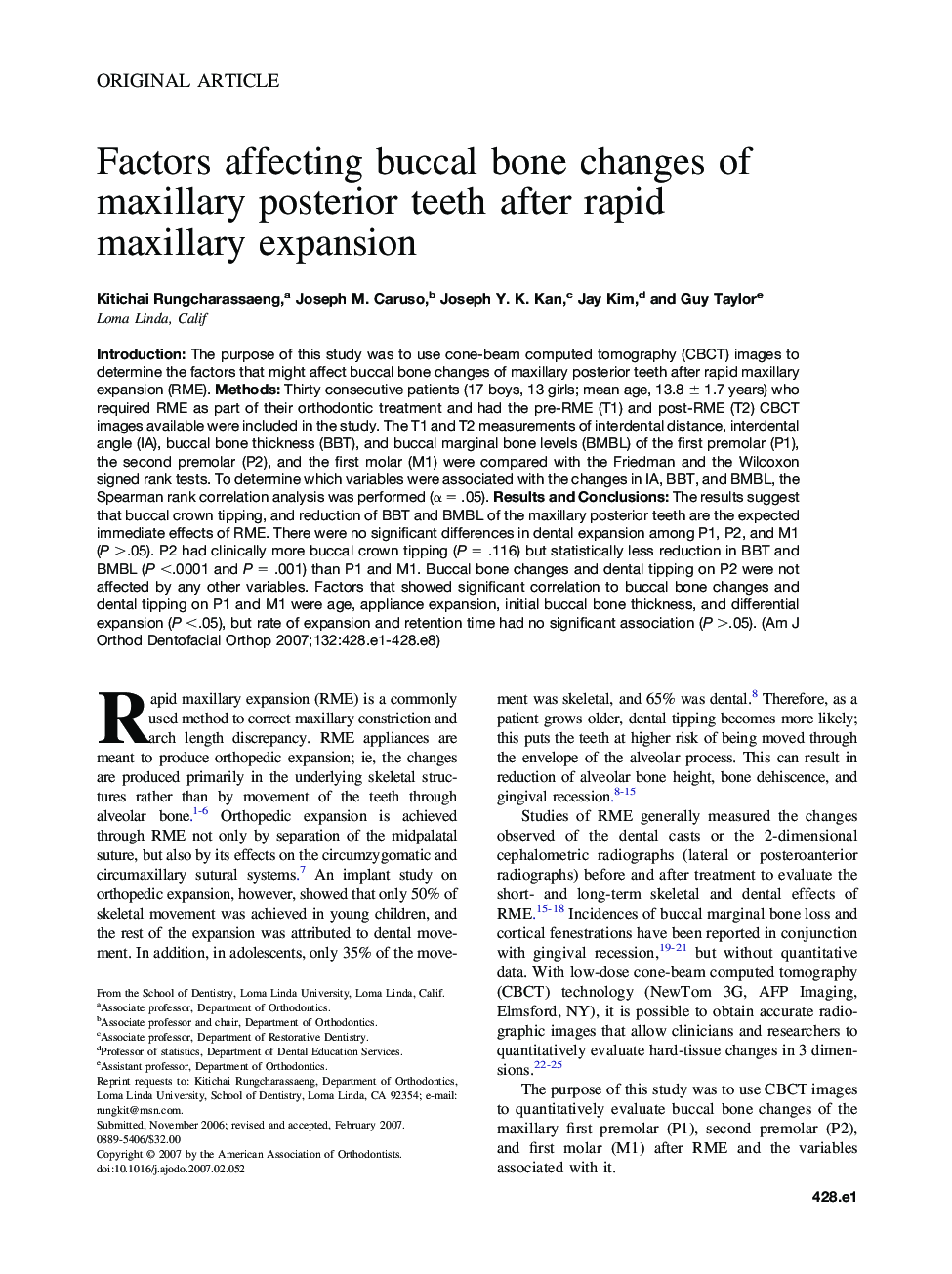| Article ID | Journal | Published Year | Pages | File Type |
|---|---|---|---|---|
| 3119790 | American Journal of Orthodontics and Dentofacial Orthopedics | 2007 | 8 Pages |
Abstract
Introduction: The purpose of this study was to use cone-beam computed tomography (CBCT) images to determine the factors that might affect buccal bone changes of maxillary posterior teeth after rapid maxillary expansion (RME). Methods: Thirty consecutive patients (17 boys, 13 girls; mean age, 13.8 ± 1.7 years) who required RME as part of their orthodontic treatment and had the pre-RME (T1) and post-RME (T2) CBCT images available were included in the study. The T1 and T2 measurements of interdental distance, interdental angle (IA), buccal bone thickness (BBT), and buccal marginal bone levels (BMBL) of the first premolar (P1), the second premolar (P2), and the first molar (M1) were compared with the Friedman and the Wilcoxon signed rank tests. To determine which variables were associated with the changes in IA, BBT, and BMBL, the Spearman rank correlation analysis was performed (α = .05). Results and Conclusions: The results suggest that buccal crown tipping, and reduction of BBT and BMBL of the maxillary posterior teeth are the expected immediate effects of RME. There were no significant differences in dental expansion among P1, P2, and M1 (P >.05). P2 had clinically more buccal crown tipping (P = .116) but statistically less reduction in BBT and BMBL (P <.0001 and P = .001) than P1 and M1. Buccal bone changes and dental tipping on P2 were not affected by any other variables. Factors that showed significant correlation to buccal bone changes and dental tipping on P1 and M1 were age, appliance expansion, initial buccal bone thickness, and differential expansion (P <.05), but rate of expansion and retention time had no significant association (P >.05).
Related Topics
Health Sciences
Medicine and Dentistry
Dentistry, Oral Surgery and Medicine
Authors
Kitichai Rungcharassaeng, Joseph M. Caruso, Joseph Y.K. Kan, Jay Kim, Guy Taylor,
